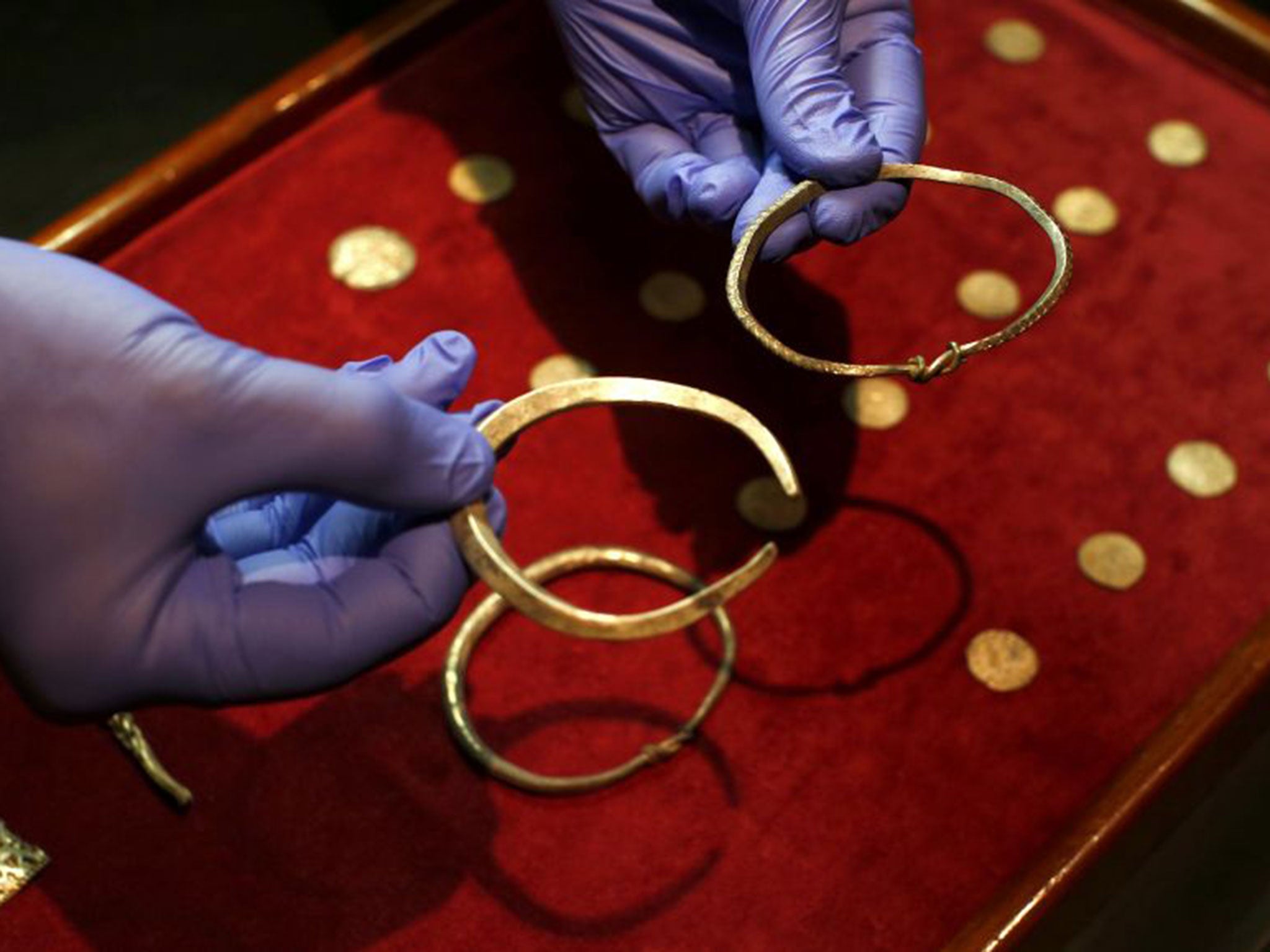Watlington Hoard reveals Alfred the Great's 'Stalin-style' airbrushing of history
In presenting Alfred as the sole saviour of the Anglo-Saxons, contemporary accounts had dismissed Ceolwulf II

The name of Alfred the Great has resounded down the centuries of British history thanks to the one-time king’s defeat of the Norse invaders. The name of Ceolwulf II is less well-known, however, thanks to his dismissal by chroniclers as a “puppet of the Vikings”.
Now a find by a metal detector enthusiast has rewritten history. Coins from the Watlington Hoard, a treasure unearthed just two months ago, have revealed that the two kings who ruled different parts of England were once close allies, but Alfred ruthlessly airbrushed his former friend out of history “Stalin-style” when they fell out.
Historian say the silver coins, ingots and arm bracelets discovered in an Oxfordshire field shed new light on Alfred, king of Wessex, who the Victorian historian Edward Freeman called “the most perfect character in history”.
The Watlington Hoard, which dates to the late 870s, was unveiled at the British Museum today. Gareth Williams, curator of medieval coinage at the museum, said it illuminated a “poorly understood” period.
In presenting Alfred as the sole saviour of the Anglo-Saxons, contemporary accounts dismissed Ceolwulf II, the last king of the adjoining Mercia, as a puppet of the Vikings.
“That’s the way he’s gone down in the history books. The coins show a different picture,” Dr Williams said.

Rivals or allies? Alfred and Ceolwulf
Alfred the Great is the most famous Anglo-Saxon king, hailed for fighting off the Vikings and kick-starting the unification of England.
He became the King of Wessex in 871 at the age of 21. Seven years later a Viking invasion forced him to flee to the Somerset marshes – supposedly when he burnt the peasant woman’s cakes, a legend written by 12th century chroniclers and for which he is best-known. After a period of guerrilla warfare, he defeated the Vikings in 878 at the Battle of Edington.
The records show little about Ceolwulf II. He came to power in Mercia after Burgred was deposed by the Vikings. The pro-Wessex chronicles suggest he was a puppet of the Vikings, though the new evidence suggests this was false and instead he had an alliance with Alfred against the invaders.
After the alliance collapsed, Ceolwulf vanished, with no further reference made to him after 879, although he may have continued ruling. In 883 Ethelred took control of the territory, under the lordship of Alfred.
A dozen of the coins show the same image of two Roman emperors, believed to signify the two rulers, on one side. Several are minted with Alfred’s name, others with Ceolwulf’s.
“It’s not coincidental,” Dr Williams said. “It’s an alliance or a coalition between two different political groups which breaks up acrimoniously a few years later. One partner in that coalition disappears without trace.”
Ceolwulf II reigned in Mercia from 874 to 879, while Alfred became king of Wessex in AD 871 until 899 when he was referred to as “king of the English” on coins.
The Mercian king “gets a bad press in Anglo-Saxon history,” Dr Williams added. The accounts written during Alfred’s reign describe him as a “foolish king’s thane” and a “puppet of the Vikings”. These include by Alfred’s biographer Bishop Asser of Wales and the Anglo-Saxon Chronicles.

“About 15 years after his disappearance these accounts are written at Alfred’s court dismissing Ceolwulf as nobody of consequence,” Dr Williams said. “Perhaps we should think more of Stalin and Trotsky with Ceolwulf being airbrushed out of history because he was no longer convenient.”
The Vikings had conquered most of Mercia but Ceolwulf II still controlled part of the territory until 879. “Alfred wants to present himself as the saviour of Mercia by kindly taking over the kingdom. But Ceolwulf was king in his own right. The coins may also suggest he was in charge of a larger area of Mercia than previously thought.”
The expert said it “gives us a different picture of Alfred the great, national hero defeating the Vikings. He did do that, he was a great English king, but the Mercian people may have seen him in a different light.”
Metal detectorist James Mather found the hoard in October and worked on the excavation over the following days including his 60th birthday. It was an amazing feeling. The range of emotions went from shock and disbelief to joy,” he said.
The hoard was excavated by experts from the Portable Antiquities Scheme, a Government-funded group which records the public’s finds. Work still continues on the fragile find which comprises 186 coins, seven items of jewellery and 15 ingots, though there is little idea of why it was abandoned.
It is hoped the hoard will go on display at the Ashmolean Museum in Oxford.
Join our commenting forum
Join thought-provoking conversations, follow other Independent readers and see their replies
Comments